When you have a construction project that requires compacting soil, gravel or asphalt, using a compactor plate is the most efficient way to get the job done. Compactor plates are powerful machines that apply high amounts of force to compress and flatten various types of surfaces.
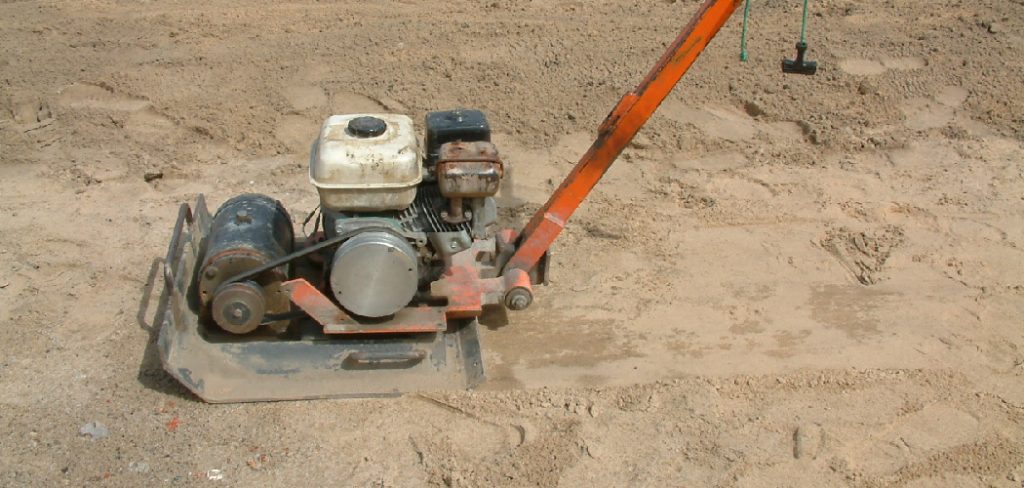
In this guide, we will discuss how to use a compactor plate in detail. We will cover important safety precautions, step-by-step instructions for preparing and operating the compactor plate, and tips for maintaining the machine.
Needed Materials
Given the nature of construction work, it is important to have all necessary materials and equipment before beginning any project. Here is a list of items you will need for using a compactor plate:
Compactor Plate:
This is the main machine used for compacting surfaces.
Fuel:
Make sure you have enough fuel to power the machine throughout the project.
Safety Gear:
Personal protective equipment such as work gloves, safety glasses, and ear protection should be worn at all times.
Marking Paint:
This will help you mark the areas that need to be compacted.
Rake or Shovel:
These tools are useful for preparing the surface before using the compactor plate.
Safety Precautions
Before starting any construction project, it is crucial to take necessary safety precautions to avoid accidents and injuries. Here are some general safety measures to keep in mind when using a compactor plate:
- Before operating the machine, make sure you have read and understood the manufacturer’s instructions.
- Always wear appropriate personal protective equipment (PPE) when using a compactor plate.
- Make sure there are no bystanders or workers near the machine before starting it.
- Keep a safe distance from the machine while it is running.
- Do not operate the compactor plate on slippery or steep surfaces.
- Never leave the machine running unattended.
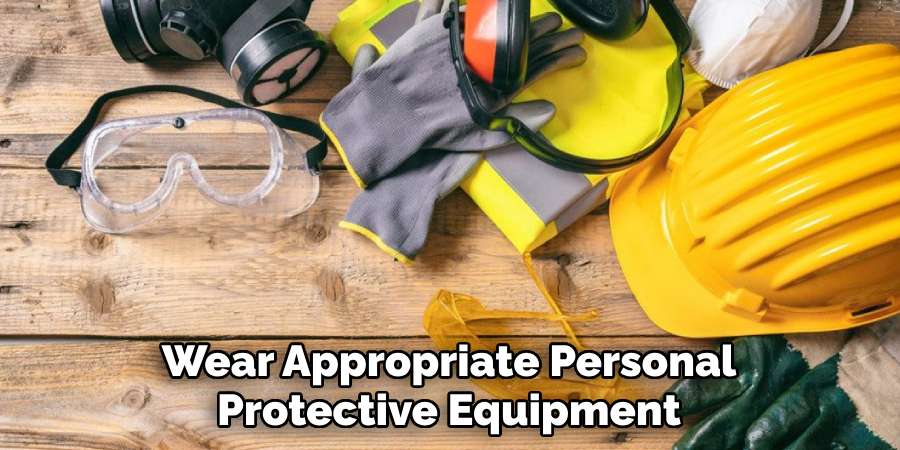
11 Step-by-step Instructions on How to Use a Compactor Plate
Now that you have taken all necessary safety precautions and gathered all material, let’s dive into the step-by-step instructions for using a compactor plate:
Step 1: Prepare the Surface
Remove any debris, large rocks or vegetation from the area you will be compacting. You can use a rake or shovel to level the surface. It is important to have a smooth, flat surface for effective compaction. You can also use marking paint to define the area that needs to be compacted. You can also moisten the surface if it is too dry.
Step 2: Check the Plate and Machine
Before starting the machine, inspect the compactor plate for any damage or defects. Make sure all bolts and nuts are tight and secure. Also, check the fuel level and top up if necessary. It is important to keep the machine in good working condition for safety and efficiency. You can refer to the manufacturer’s manual for specific maintenance instructions.
Step 3: Start the Machine
Place the compactor plate on a level surface and start the engine by pulling the recoil starter. If your machine has an electric starter, use that instead. Let the engine idle for a couple of minutes before using it. This allows the engine to warm up and ensures a smoother operation. You can adjust the throttle to increase or decrease the engine speed. It is recommended to start at a low throttle and gradually increase it as needed.
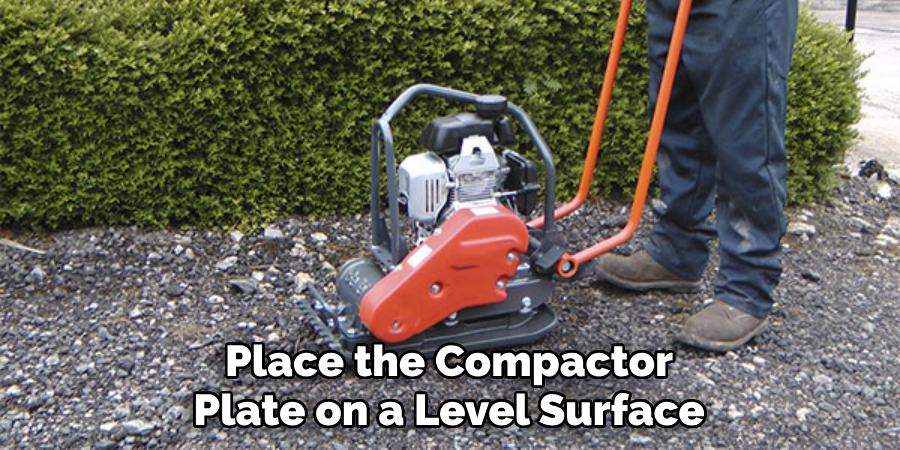
Step 4: Familiarize Yourself with the Machine Controls
Before moving the compactor plate, make sure you are familiar with all the controls. These may include a throttle lever, an on/off switch, and a direction control lever for forward and reverse movement. Some compactor plates also have a water tank for moistening the surface, so make sure you know how to operate it.
Step 5: Position Yourself Correctly
Stand behind the machine and grasp the handlebars firmly with both hands. Keep a firm grip on the machine at all times, especially when it is in motion. Make sure your feet are stable and not too close to the plate. It is also important to maintain a safe distance from the machine while it is running. You can refer to the manufacturer’s instructions for specific safety guidelines.
Step 6: Begin Compacting
Using the direction control lever, move the compactor plate in a forward motion. Slowly guide the machine over the surface, making sure all areas are compacted evenly.
You can use overlapping passes for better compaction. If needed, you can also go over the same area multiple times to achieve desired results. But be careful not to overcompact as it can damage the surface. You can also use the water tank to moisten the surface if necessary.
Step 7: Change Direction
When you reach the end of the surface, gently lift the handlebars and use the direction control lever to turn around. Slowly guide the machine in the opposite direction, overlapping your previous passes for even compaction. It is important to use smooth, steady movements to avoid any damage to the surface. It is also recommended to reverse-compact every now and then for better results.
Step 8: Compact Edges
For areas that are difficult to reach with the compactor plate, you can use a hand tamper or a smaller plate tamping machine to compact the edges. This will ensure that all areas are evenly compacted. It is important to make sure there are no gaps or uneven areas on the surface.
But be careful not to overcompact as it can cause cracking or damage. You can also use a tamping tool to smooth out any uneven patches. You can refer to the manufacturer’s manual for specific guidelines on compacting edges.
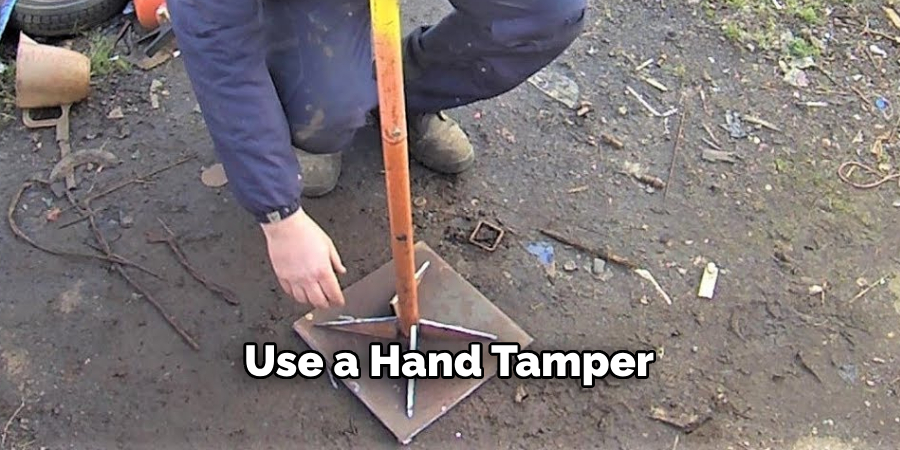
Step 9: Adjust Throttle as Needed
Depending on the density and type of material, you may need to adjust the throttle for optimal results. It is recommended to start at a lower throttle and gradually increase it as needed. It is important to maintain a steady pace and not rush the process.
Compactor plates are designed for heavy-duty use, so take your time to achieve desired results. It is also important to keep an eye on the fuel level and top up if needed.
Step 10: Check Your Progress
As you compact the surface, periodically check for any uneven areas or gaps. You can also use a measuring tool to ensure that the compaction depth is consistent throughout the entire surface. If needed, you can go over any areas that need more compaction. This will help ensure a strong, stable surface. It is also recommended to periodically check the machine for any damage or defects.
Step 11: Clean and Store the Machine
Once you have completed the compaction process, let the machine idle for a few minutes to cool down. Then, turn off the engine and disconnect the spark plug or power source. Clean any debris or dirt from the machine using a brush or cloth.
Make sure all fuel and oil caps are securely closed before storing the machine in a dry, secure location. Proper maintenance and storage will ensure your compactor plate stays in good working condition for future use.
Following these step-by-step instructions on how to use a compactor plate will help you effectively use a compactor plate for any project. Remember to always prioritize safety and follow the manufacturer’s guidelines for optimal results. With proper use and maintenance, a compactor plate can be a valuable tool for any construction or landscaping project. So go ahead and start compacting!
Frequently Asked Questions
Q: Can I Use a Compactor Plate on Any Surface?
A: Compactor plates are designed for use on flat surfaces such as soil, asphalt, or gravel. It is important to make sure the surface is not too rocky or uneven, as it can cause damage to the machine.
Q: How Often Should I Compact the Same Area?
A: It is recommended to compact each area at least three times for best results. However, it may vary depending on the type of material and desired compaction level. Refer to the manufacturer’s manual for specific guidelines.
Q: Can I Use a Compactor Plate in Wet Conditions?
A: It is not recommended to use a compactor plate in wet or rainy conditions, as it can affect the compaction process and potentially damage the machine. It is best to wait for dry conditions before using the machine.
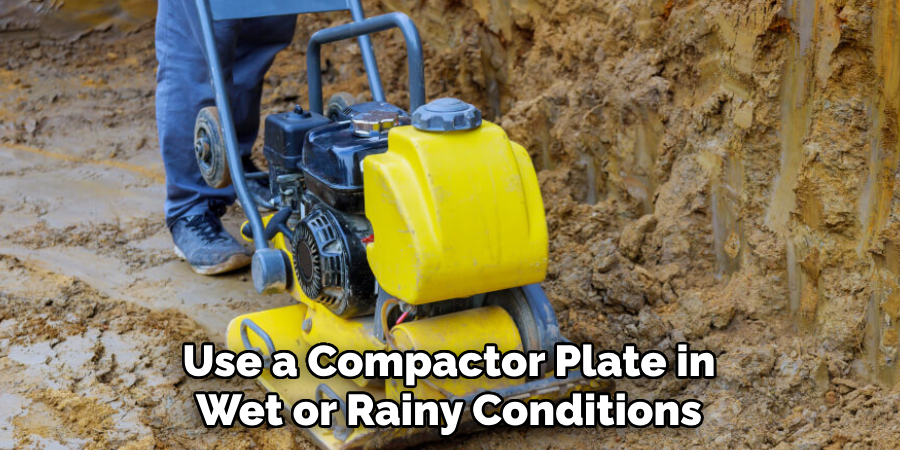
Q: How Do I Know If I Am Overcompacting?
A: Signs of overcompaction include cracking, uneven surfaces, and difficulty in compacting. If you notice any of these signs, it is important to stop the machine and adjust the throttle or technique as needed.
Conclusion
In conclusion, it is essential to learn how to use a compactor plate in order to get the optimal results from your work. You should always make sure you are educated on safety and wear the appropriate protective gear because operating a compactor plate can be dangerous if the proper precautions are not taken.
If done correctly, the process of compacting soil or asphalt will drastically improve your project’s performance and longevity. Now that you know how to safely and efficiently use a compactor plate, you’ll be able to tackle were tasks with ease! Don’t wait any longer – go out there and get started!
